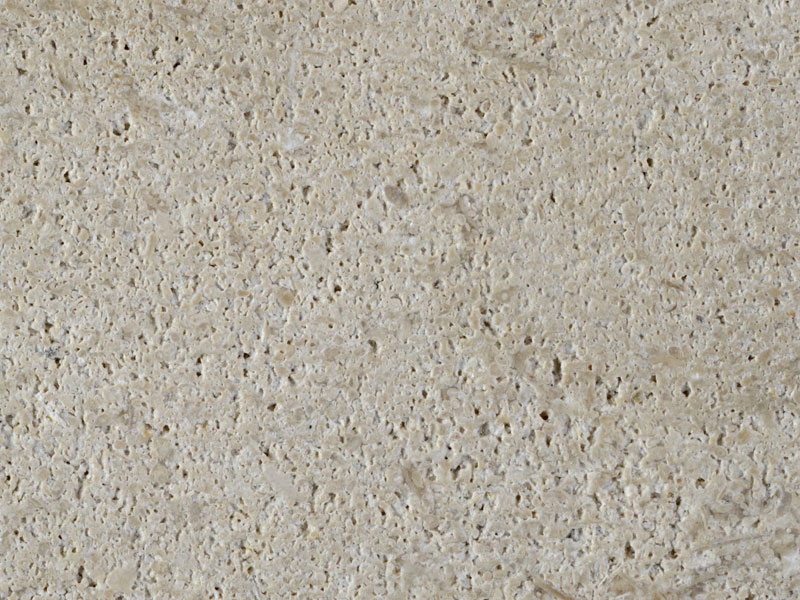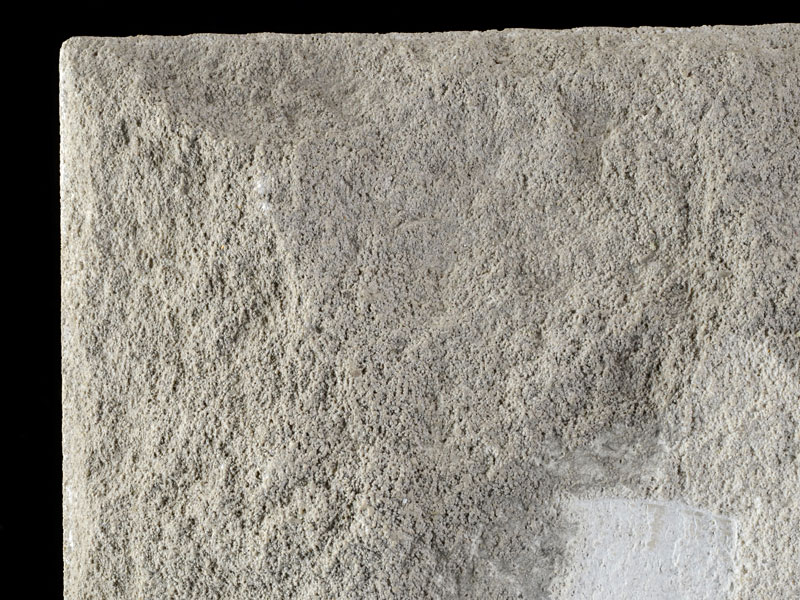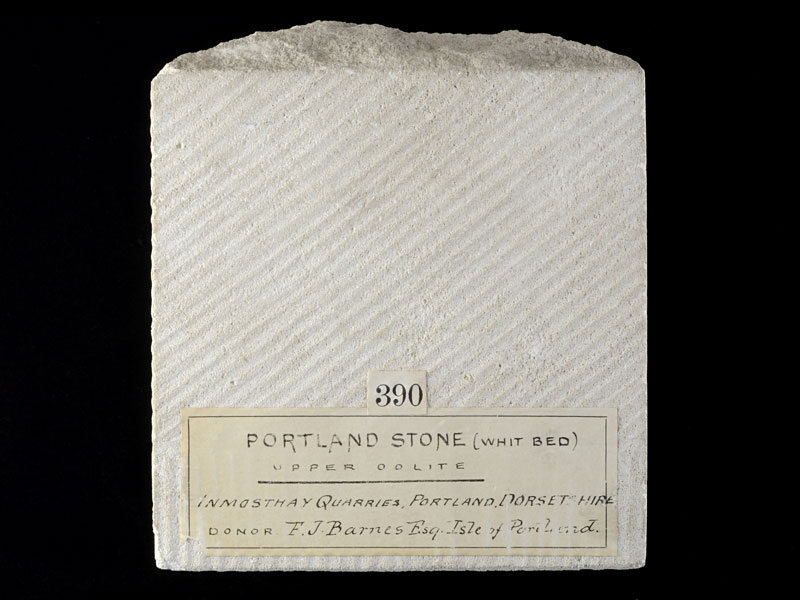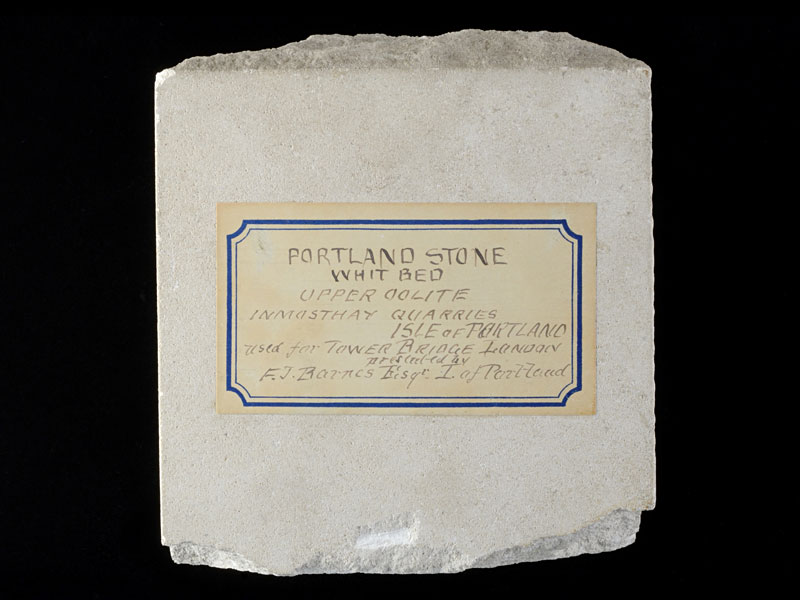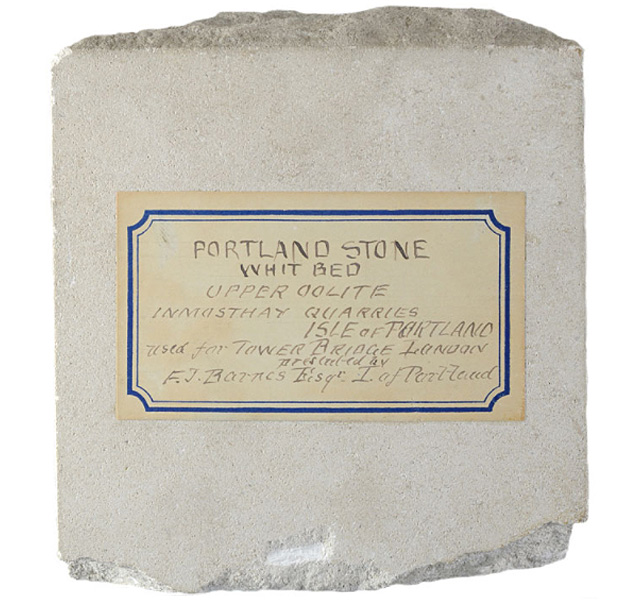
Fact sheet
This oolitic limestone rock was deposited in a warm shallow sea not far from land during the Jurassic period around 140 million years ago. The sample comes from a large quarry in the centre of the Isle of Portland in Dorset. Portland stone has been used as a building stone since Roman times and was used in the construction of Buckingham Palace and St Paul's cathedral.
The thin section shows that the rock is dominated by spherical ooids with cores of shell fragments and angular quartz grains coated by carbonate micrite cement in concentric layers. The rock also contains shell fragments, including mainly fragments of bivalves. Some of the pore spaces between shell fragments and ooids remain open but the majority are cemented by micrite and sparry calcite. The almost complete filling of pore spaces in this limestone by cemented micrite (carbonate rich mud) and sparry calcite has made it more resistant to erosion and thus a good building stone.
The United Kingdom Virtual Microscope (UKVM) collection consists of igneous, sedimentary and metamorphic rocks from around the UK.
It is intended as a teaching resource, helping to tell the story of the common rock types and how they form, and reflecting the history of the UK at the margins of the continent of Europe. The collection is a series of teaching sets, for example igneous rocks from the North Atlantic Igneous Province and SW England; high-temperature metamorphic rocks from Scotland and low-temperature metamorphic rocks from Wales; and sedimentary rocks, including English limestones and sandstones.
